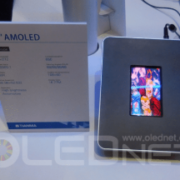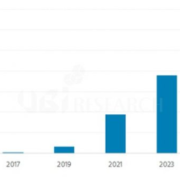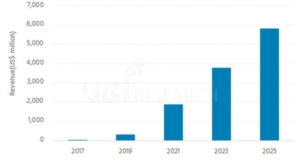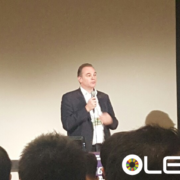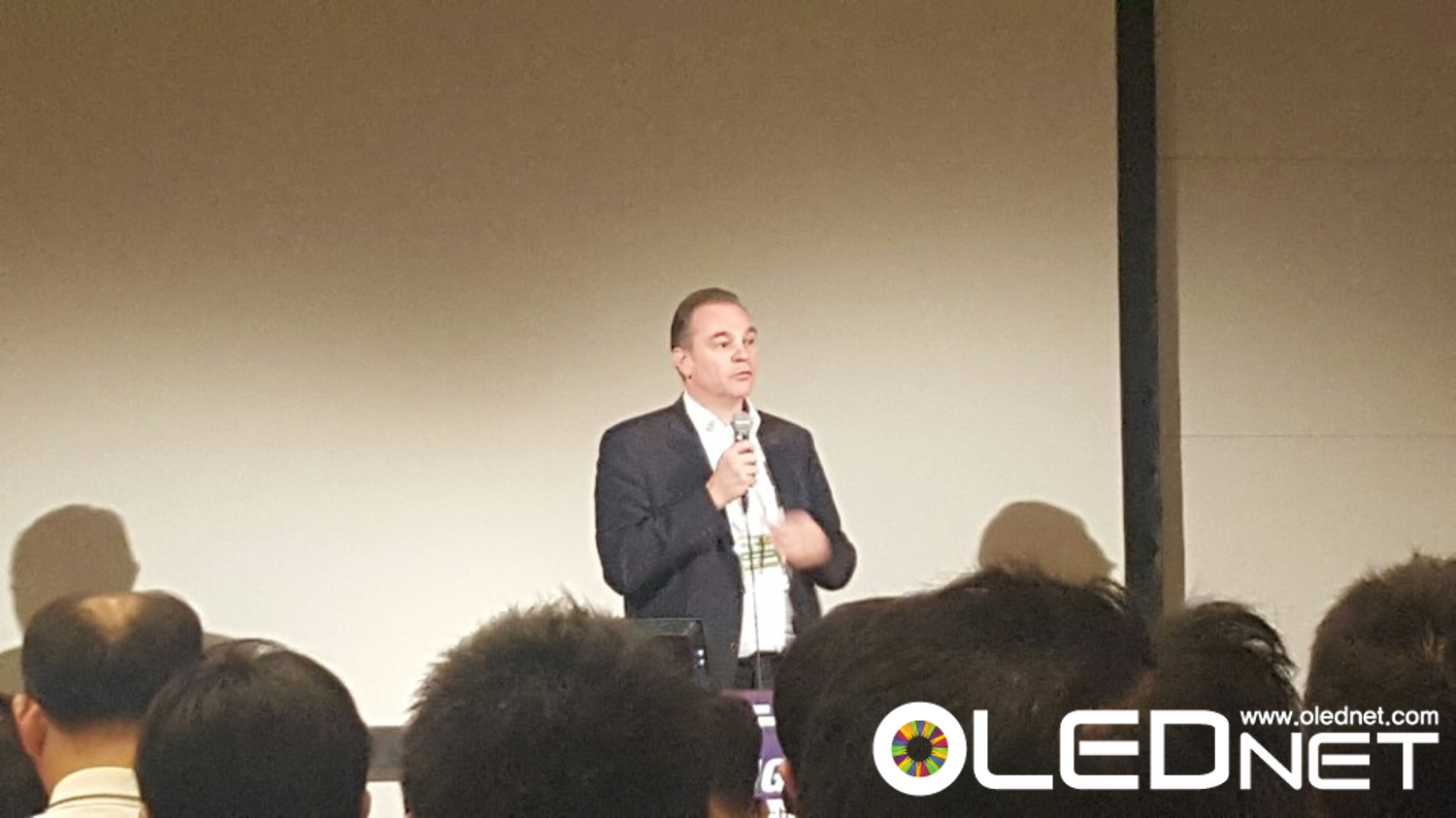At the 10th CAR-ELE JAPAN, Many Companies Unveiled Automotive OLED Display and Lighting
By Hana Oh (hanaoh@ubiresearch.com)
OLED display and lighting are expected to become increasingly applied to the interior and exterior of automobiles.
At CES 2018, Samsung Electronics introduced the OLED-applied dashboard. LG Electronics unveiled the center fascia with 14-inch OLED, and OLED set makers continue to exhibit their OLED applications for automobiles.
At the 10th CAR-ELE JAPAN held in TOKYO BIG SIGHT(Tokyo International Exhibition Center) on 17th, several companies including Tianma and Truly exhibited automotive OLED displays and lighting.
Tianma exhibited 4.2-inch, 5.46-inch and 5.99-inch OLED panels. The 5.99-inch OLED was a full-screen OLED, and the company official said “The full screen will be applied not only to mobile devices but also to automobiles such as CIDs and navigation systems due to the nature of automotive displays sensitive to visual impacts.” It is said they produced the OLED Panel with high luminance, including 5.46-inch and 4.2-inch OLED with luminance of 650 cd/m2, ensuring good high visibility under sunlight. In addition, they announced that they will manufacture unbreakable flexible type of OLED even though the exhibited OLEDs were all rigid type.
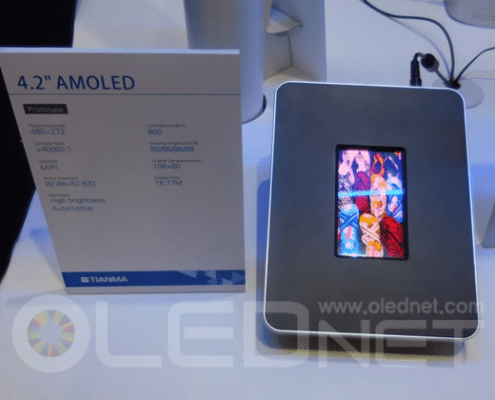
<Tianma’s Automotive OLED Panel>
Truly exhibited 5.5-inch OLED panel. The company’s official mentioned that although they can not disclose detailed specifications, it should be further developed in terms of reliability for the application to the current automotive displays. In addition, they announced that automotive potentials such as autonomous vehicles are so huge that the importance of displays that can provide visual information will become even more important, and therefore they will invest in it.
Lastly, Nippon Electric Glass introduced OLED lighting which was created in collaboration with OLEDWorks. “This was created as interior lights and taillights for vehicles.” and “The OLED lighting substrate uses IEL(internal extraction layer) to improve more efficiency when applied to indoor lights, and better visibility when applied to taillights,” explained the company’s official.”
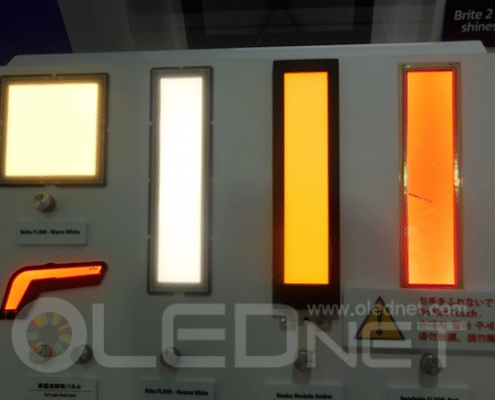
<OLED Lighting exhibited by Nippon Electric Glass>
Meanwhile, in relation to OLED lighting, OLED light source companies such as LG Display and Osram supplied the OLED lights for tail lights to finished car makers such as Mercedes-Benz and BMW. In particular, it is expected to start the OLED lighting market in earnest, for example LG Display’s announcement of full-scale operation of the Gen5 OLED light source production line in December.

